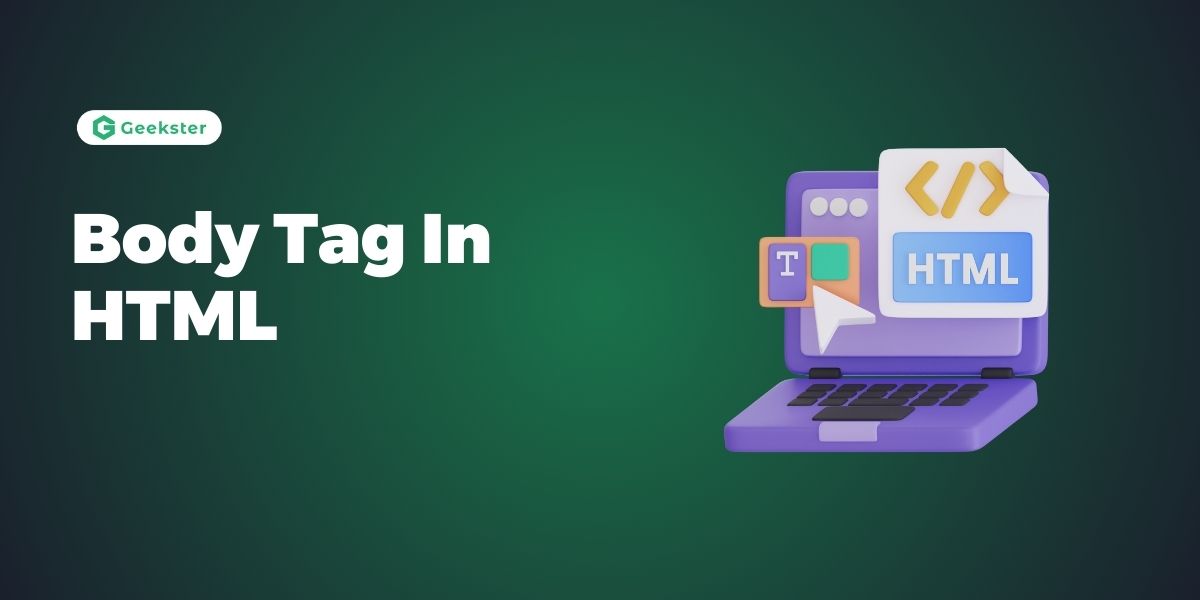Introduction
The body tag in HTML is a fundamental detail in HTML, chargeable for defining the principle content of an HTML report. It encompasses all the elements seen by the consumer, including textual content, photos, hyperlinks, tables, and more, making it active. In this newsletter, we are able to delve into the importance of the tag, its structure, and the way it interacts with distinct HTML elements.
The Role of the Body Tag In HTML
The tag is crucial because it holds all the content displayed on the web page. Place anything meant to be visible or interactive for the user within the <body> tag . This tag is a container for all the visible factors and is located inside the tag however after the tag.
Basic Structure of the Body Tag In HTML
The basic syntax of the <body> tag is straightforward:
<!DOCTYPE html>
<html lang="en">
<head>
<meta charset="UTF-8">
<meta name="viewport" content="width=device-width, initial-scale=1.0">
<title>Document Title</title>
</head>
<body>
<!-- Content goes here -->
</body>
</html>Everything in the tag can be rendered on the internet web page. This includes headings, paragraphs, pictures, hyperlinks, and other HTML elements.
Content Elements Within the Body Tag In HTML
Headings
HTML has six ranges of headings, from <h1> to <h6>, with <h1> being the most critical and <h6> the least. These headings assist shape the content and make it less complicated for customers and search engines like google to understand the hierarchy and importance of different sections.
<h1>Main Heading</h1>
<h2>Subheading</h2>
<h3>Sub-subheading</h3>Paragraphs
Paragraphs are defined using the <p> tag. It used to separate blocks of text.
<p>This is a paragraph of text in the body section.</p>Images
Images can be embedded using the tag. The src characteristic specifies the location of the photo, and the alt attribute affords alternative text for display screen readers.
<img src="image.jpg" alt="Description of image">Links
Links are created using the <a> tag. The href attribute specifies the URL of the page the link goes to.
<a href="https://www.example.com">Visit Example.com</a>Lists
There are two types of lists in HTML: ordered lists (<ol>) and unordered lists (<ul>). Each list item is defined using the <li> tag.
<ul>
<li>Item 1</li>
<li>Item 2</li>
<li>Item 3</li>
</ul>
<ol>
<li>First item</li>
<li>Second item</li>
<li>Third item</li>
</ol>
Structuring Content for Better User Experience
Proper use of the <body> tag and its contents can greatly enhance the user experience. By organizing content with headings, paragraphs, and lists, you can create a clear and accessible structure. Additionally, using images and links appropriately can make your content more engaging.
Styling and Scripting within the Body Tag In HTML
Inline Styles
While it is generally better practice to keep CSS in a separate stylesheet, you can apply styles directly within the HTML using the style attribute.
<p style="color: blue; font-size: 16px;">This is a styled paragraph.</p>Inline Scripts
JavaScript can also be included within the <body> tag using the <script> tag. This can be useful for adding interactive elements to your page.
<script>
document.addEventListener('DOMContentLoaded', (event) => {
alert('Welcome to my website!');
});
</script>Best Practices for Using Body Tag In HTML
- Keep Content Organized: Use headings, paragraphs, and lists to organize your content logically.
- Separate Concerns: Use external CSS for styling and external JavaScript for functionality to keep your HTML clean and maintainable.
- Use Semantic HTML: Whenever possible, use semantic HTML tags (like
<article>,<section>,<nav>, etc.) to improve the readability and accessibility of your content.
Conclusion
The <body> tag is an essential part of any HTML document, containing all the elements that make up the visible content of a web page. By understanding and effectively using the <body> tag and its associated elements, you can create well-structured, accessible, and engaging web pages. Whether you are a beginner or an experienced developer, mastering the use of the <body> tag is fundamental to building successful web projects.
Frequently Asked Questions
<body> tag used for in HTML? The <body> tag in HTML is used to define the main content of an HTML document. The <body> tag holds all the elements displayed to the user, including text, images, links, tables, and multimedia content.
<body> tag placed in an HTML document? The <body> tag is placed within the <html> tag but after the <head> tag.
<body> tag contain other HTML elements? Yes, the <body> tag can contain a wide range of HTML elements, including headings, paragraphs, images, links, lists, tables, forms, and more.

